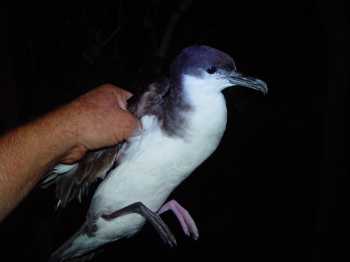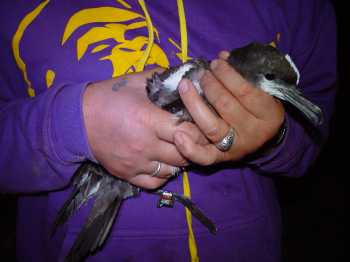Currently, the Albatross and Petrel Agreement lists 22 species of albatrosses (family Diomedeidae) and seven petrels of the genera Macronectes and Procellaria.
In addition, nine species of shearwaters of the genera Calonectris and Puffinus have been considered as "potential candidate" species for listing within the Agreement (AC5 Inf 15). Two of these nine are considered threatened by IUCN/BirdLife International: the Critically Endangered Balearic P. mauretanicus and the Vulnerable Pink-footed P. creatopus Shearwaters.
In total 22 species of shearwaters are recognized, of which seven have been categorized as threatened (click here for a list). One of these is the Vulnerable Buller's Shearwater P. bulleri. This little-known species breeds only on the Poor Knights Islands off east coast of the Northland Region of the North Island of New Zealand where a current collaboration between New Zealand's Department of Conservation (DOC) and the National Institute of Water and Atmospheric Research Ltd (NIWA) is seeking to understand the at-sea biology of the species.
In March 2011 Graeme Taylor of the Department of Conservation's Research and Development Group and two volunteers visited Aorangi Island in the Poor Knights Island Group to catch adult Buller's Shearwaters and attach light-based geolocators supplied by the British Antarctic Survey to study their local movements during breeding and migration pathways beyond New Zealand, including as a trans-equatorial migrant to the northern Pacific Ocean.
Between 100 and 150 burrows were checked for the presence of chicks. Only 16 chicks were located, suggesting breeding success was very poor in the 2010/11 season. By the end of the field trip 26 Buller's Shearwaters had been caught and geolocators added to either metal or colour leg bands. Thirteen birds were feeding chicks and 13 were failed breeders reoccupying empty burrows at night.
Following recovery of the loggers in the coming breeding season, data will be analysed by NIWA and DOC, allowing the at-sea movements of the species to be better defined.
An initial estimate of burrow density on Aorangi in March 2011 suggests the island holds about 40 000 Buller's Shearwater burrows.


Selected references:
Taylor, G.A. 2000. Action Plan for Seabird Conservation in New Zealand. Part A: Threatened Seabirds. Threatened Species Occasional Publication No. 16. Wellington: Department of Conservation. 236 pp.
Uhlmann, S.S. & Jonathan M. Jeschke, J.M. 2011. Comparing factors associated with total and dead sooty shearwater bycatch in New Zealand trawl fisheries. Biological Conservation 144: 1859-1865.
With thanks to Matt Rayner, ACAP Australasian News Correspondent and Graeme Taylor, New Zealand Department of Conservation for information.
John Cooper, ACAP Information Officer, 8 August 2011

 English
English  Français
Français  Español
Español